5. Rome, Open City (1945)
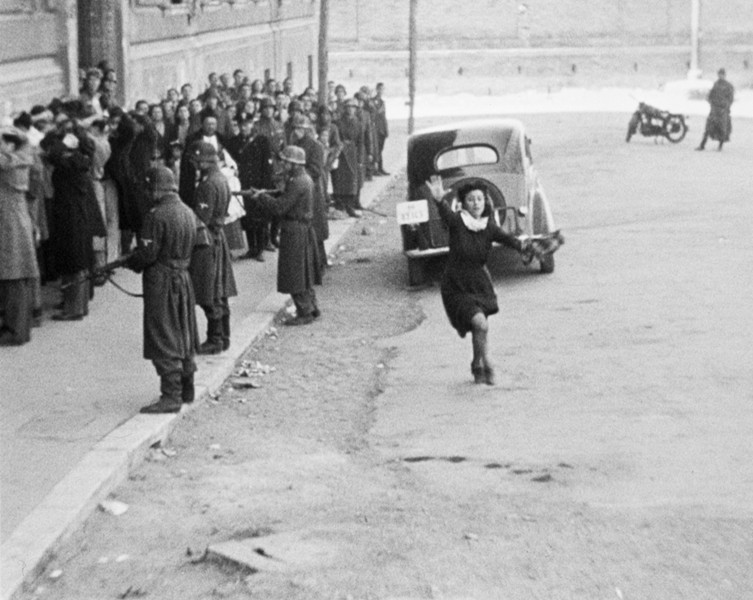
A historical document like no other, Roberto Rossellini’s Rome, Open City almost singlehandedly defined its respective era; a wartime tragedy set against the backdrop of a decimated Rome. Shot a mere two months after the Nazis left the capital, Rossellini’s classic wasn’t dangerous due to any immediate fascist threat, but because of the collective emotional state of the surrounding Italian community.
More obvious dangers lie in the environment here, with crumbling buildings and ruined streets constituting the majority of the set-pieces. To add to this gnawing sense of realism, Rossellini shot footage of genuine German prisoners of war, the inhumane methods of captivity photographed for the entire world to see.
Still, the greatest risk in Rome, Open City was at the core of the production itself; the very concept of recreating the hellish imagery of the Nazi regime. Whilst filming one scene in which SS officers drag a priest out of a car, a passing citizen pulled a handgun on the actors and threatened to shoot. The actor’s terrified reaction in the finished scene is real, further illuminating the psychologically delicate territory Rossellini was operating in.
4. The African Queen (1951)
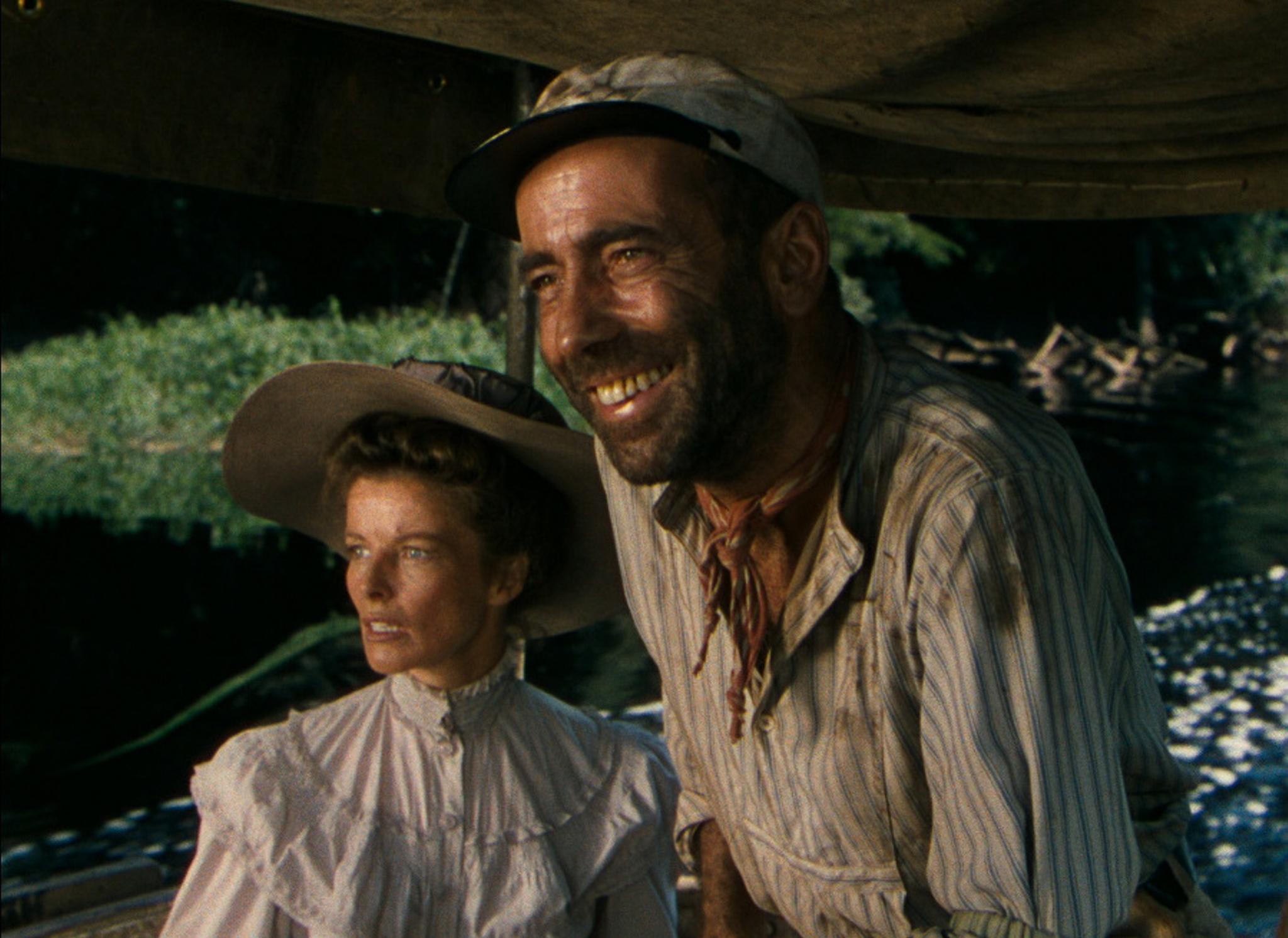
All aboard The African Queen, John Huston’s highly acclaimed on-location adventure. The African Queen is something of an anomaly in the history of studio movies, largely due to the success of director John Huston. Huston was notorious for getting what he wanted when it came to the studios, and yet this one was a stretch, not just for the financiers, but for the entire cast and crew. Shooting the film in rural Africa, Huston subjected the production to no end of risks, the environmental threats of crocodiles, malaria and poisonous insects being the least of it.
Scare-stories are plentiful on The African Queen, and never without excitement. One story from Katherine Hepburn’s autobiography details how Huston took her hunting one day, leading her out into a herd of wild animals, the two barely escaping with their lives. Huston’s impulsivity grew tedious for most of the actors, but it was Humphrey Bogart who detested the work environment the most. In his ceaseless attempts to dodge danger, he survived the shoot as the only person not to get sick, living on a diet which consisted solely of baked beans, canned asparagus and Scotch whiskey.
Hepburn, however, met with an entirely different fate. While almost the whole cast and crew experienced severe illness from dysentery, Hepburn was at the height of debilitation. According to cinematography titan Jack Cardiff, Hepburn would often vomit violently between takes. It’s even said that on one occasion she ran to an outhouse toilet, all to be greeted by a fatally venomous black mamba snake. Beyond chaotic river-shoots like Apocalypse Now, this film stands tall as perhaps the first on-location endeavor ever to remotely emulate the peril of Joseph Conrad’s famed novella, Heart of Darkness.
3. For Sama (2019)
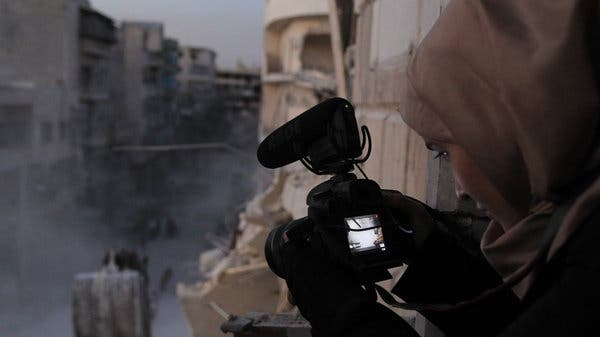
This Oscar-nominated documentary from 2019 is more an exercise in bearing witness than anything in the way of a conventional film, but it’s undoubtedly the most heart-rending entry to this list. It charts five years in the tumultuous life of Waad al-Kateab, a Syrian mother whose decision to stand her ground and document her homeland during wartime becomes the basis of a bittersweet ode to her newborn daughter.
It should be said that For Sama is shockingly graphic, containing scenes of injury detail that are extremely upsetting. It’s these scenes, however, that help give us a rare and uncensored insight into the tragedy of Syria and its government’s terroristic regime. With the help of her husband Hamza, a doctor on the frontline of the seemingly endless genocide, Waad’s never-ending plight takes both filmmaking and activism to new lengths, risking her life and those of her family for the betterment of Aleppo, the city they love so dearly.
At once a document of a city under siege and also a testament to the unwavering strength of the human spirit, For Sama is something everyone should experience, a heroic work as important as it is profound. Hamza and Waad put their lives on the line to create the most extensive, harrowing study of the Syrian conflict ever to exist, making it one of the bravest pieces of journalism in years. It’s compelling, terrifying and unshakably bleak, but above all, it’s that rare kind of cinema which truly has the potential to change the world.
2. Fitzcarraldo (1982)
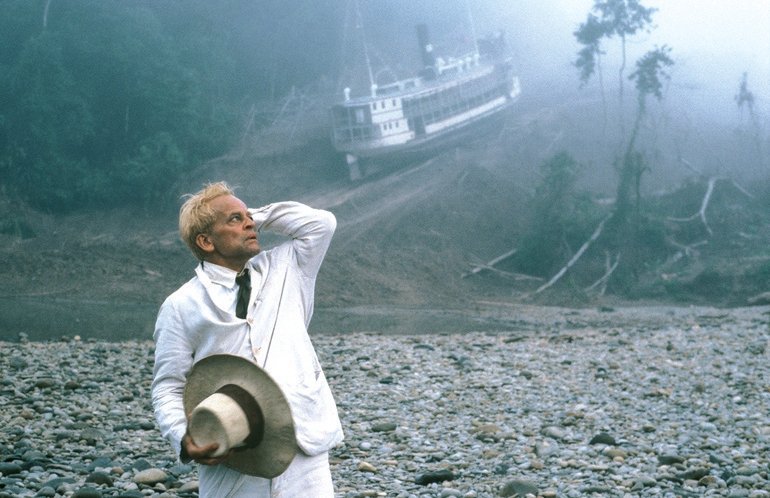
Out of all soldiers of cinema, few directors size up to the incomprehensible mentality of Werner Herzog. This man is a natural-born dreamer whose dangerous methods have seen him brave insurmountable odds time and time again. From the nail-biting adventures of Aguirre, Wrath of God to the perilous production of Rescue Dawn, Herzog is at home when taking risks, and no film better showcases that than his operatic masterpiece Fitzcarraldo, shot entirely in the cantankerous depths of the Amazonian jungle.
Listing the things that went wrong on Fitzcarraldo would be impossible to do on one hand. In making a film which focuses on the central character’s plight to drag a 365-ton cargo ship over a mountain, Herzog’s decision to attempt this task with nothing but sheer manpower birthed a barrage of life-threatening issues for the crewmembers. For six cataclysmic months, nearly a thousand indigenous extras were housed in diabolical conditions, with limited food and medical supplies. Lead actor Klaus Kinski was famously at war with Herzog during the shoot, causing such palpable tension on set that eventually one of the local tribesmen offered, with total sincerity, to have him murdered.
Injuries ranged from a Peruvian logger who amputated his own foot with a chainsaw after being bitten by a deadly snake, to a raid on the film camp which saw a man survive an arrow through the neck, and a plane-crash that left four people dead and one person paralyzed. In Les Blank’s documentary Burden of Dreams, behind-the-scenes footage reveals the pandemonium of the shoot, a mad-eyed Herzog lingering on the edge of insanity in the middle of it all. If The African Queen was vaguely reminiscent of Joseph Conrad’s river-bound novella, the making of Fitzcarraldo was a literal incarnation of it.
1. Apocalypse Now (1979)
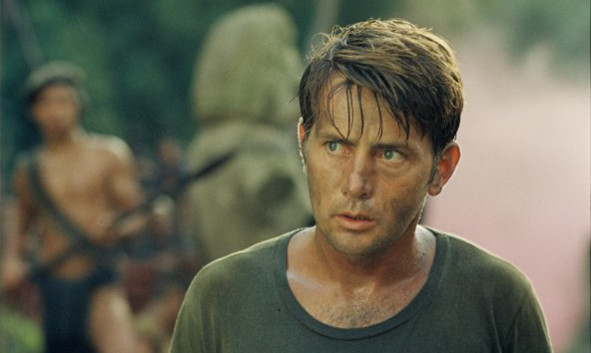
Francis Ford Coppola’s Apocalypse Now is easily the most by-the-book adaptation of Heart of Darkness, but it also happens to be the gold standard of catastrophic film-shoots. No matter how many times you’ve heard the legendary tales, they always seem to remain just as staggering. This sixteen-month stretch in The Philippines was a living hell for the majority of its makers, virtually the entire crew abusing alcohol and various psychedelic substances throughout, a fourteen-year-old Lawrence Fishburne developing a heroin addiction amidst the carnage.
During this year-and-a-half of inebriated misery, Coppola supposedly lost a hundred pounds in body weight, reaching such a grave state of mental instability that he frequently talked of committing suicide. Invaluable sets were obliterated by typhoons and hurricanes, and so it seemed that even the weather was against the making of the film. On top of this, actors proved to be continually exhausting for Francis, Marlon Brando at one point refusing to shoot his scenes, and Dennis Hopper taking so many drugs he could scarcely remember his lines.
Despite the plethora of loose-cannon performances, nothing beats Martin Sheen’s turn as Willard in terms of vulnerability. Battling an extreme case of alcoholism at the time, the opening scene shows Sheen at the peak of his blind drunkenness, screaming and writhing around naked in a dingy and dilapidated hotel room. He punches a mirror and gashes open his hand, the blood he smears around the room being 100% real. By the middle of the shoot, Sheen was in such a bad way he suffered a serious heart-attack, recovering in hospital and eventually returning to complete his scenes.
Much like Fitzcarraldo with Burden of Dreams, the lunacy of this voyage was also documented in the shape of Hearts of Darkness, a companion-piece to the film directed by Francis’ wife Eleanor Coppola, who accompanied him in the madness. This footage unveils the enormity of Coppola’s undertakings, showing us that, considering the many close shaves with death, it’s surprising anyone came back at all, let alone with the greatest war-epic ever to grace the medium. All this just goes to prove that although danger can often only negate the quality of a film, every now and then, with the right talent at the helm, it can benefit or even improve the end result.